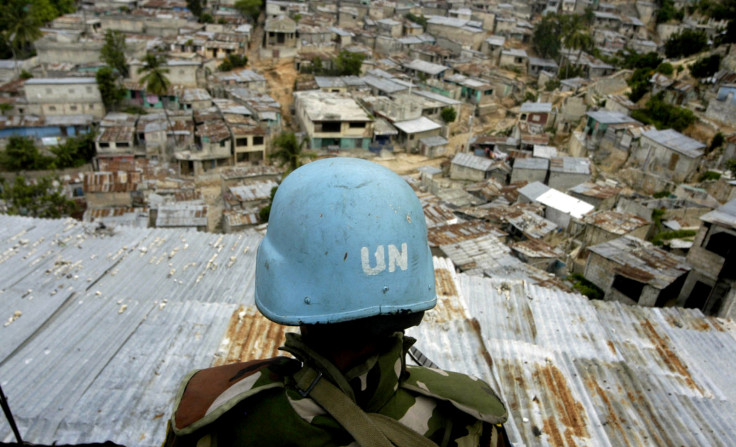The UN call for more women in peacekeeper military roles
In 1948, women made up only one per cent of uniformed UN peacekeeper personnel. In 2023, only 7.8 per cent of the UN peacekeeper military are made up of women.

Since 1948, more than two million people have served under the UN as peacekeepers. Peacekeepers are civilian, military, and police personnel who work together to protect and support the public.
Over the last 75 years, more than 3,500 peacekeepers have tragically lost their lives in the call for peace.
Peacekeeper operations include monitoring ceasefires, disarming ex-combatants, protecting human rights, promoting the rules of law, supporting fair elections, and minimising the risk of landmines.
There are also veterinary peacekeepers who are working to protect the lives of livestock and the livelihoods of people in precarious situations.
UN peacekeepers can be recognised for their uniforms. The peacekeeping uniform consists of a blue helmet or beret, and a blue badge. Other than the small token that represents their collaboration with the UN, peacekeepers wear their countries' uniforms.
Women first joined the peacekeeping force in 1993. In 1993, women only made up one per cent of uniformed personnel on the floor. However, only 7.8 per cent of uniformed military police, justice, and corrections roles on the field are filled by women.
#PeaceBegins with #WomenInPeacekeeping
— UN Peacekeeping (@UNPeacekeeping) June 26, 2023
They are driving effective peacekeeping operations worldwide. Their diverse roles positively impact peacekeeping environments and promote peace.
Let's create the right conditions for more women peacekeepers to support global peace. 🌍👩✈️❤️ pic.twitter.com/j6Qc2fhuTR
In 2020, the UN recorded that out of the 95,000 peacekeepers that were in action, only 7,400 were women.
In 2023, almost 5,000 women are currently serving on the field in countries as part of the UN peacekeeper military force. Again in 2023, over 1,500 UN police officers who are protecting the peace on the front line are women.
Farzana Sharmin, a mother and Squadron Leader who served in the largest UN Peacekeeping Mission in the Democratic Republic of Congo expressed: "I feel very good and very proud because when the local people will see that our women, we are working in the military, as a pilot, as an engineer... they will have the courage that they can fight back against the violence and they can talk about their rights. They will be confident after seeing us."
Women currently make up 4.8 per cent of military contingents, 10.9 per cent of formed police units, and 34 per cent of justice and corrections government-provided personnel in UN Peacekeeping missions.
Although the UN advocates and encourages the authorities to deploy women into police and military roles, the deployment of women in uniformed roles inherently lies with the Member States.
The ever-growing number of Member States that have collaborated with the UN Peacekeeping Mission include Afghanistan, Barbados, Colombia, Denmark, Ethiopia, Fiji, Greece, Honduras, Iraq, Japan, Kenya, Libya, Myanmar, Norway, Oman, Peru, Qatar, Rwanda, Somalia, Ukraine, Viet Nam, Yemen and Zimbabwe.
Rampant violence in eastern #DRCongo has displaced millions of people. Many live in precarious conditions and desperately need humanitarian assistance.
— UN Humanitarian (@UNOCHA) June 27, 2023
The situation will deteriorate further if support isn’t urgently scaled up.
Hear more from our colleague @pierre_peron 👇 pic.twitter.com/7eSQfbGs1O
In February 2022, it was recorded that the main contributor of uniformed personnel to UN peacekeeping operations was Bangladesh. According to the UN, Bangladesh contributed 7,233 soldiers to several UN peacekeeping missions across the globe. However, only 324 were women.
Major Rifat Sultana was one of around 1800 Bangladeshi peacekeepers who served alongside Farzana Sharmin in the Democratic Republic of Congo. Major Rifat Sultana spoke to reporters about prioritising the needs of the locals and building trust with women in the regions to better understand their needs.
Major Rifat Sultana said: "Normally you ask about their suffering or the problems they are facing. In the case of their health and housing, we ask that to the females normally. And also regarding the child, [we ask] about their education and any source of problem(s) they are facing."
The UN aim to improve the representation of women in military uniform roles by 2028. The 2028 target for women serving in military contingents is 15 per cent, and 25 per cent for military observers. By 2028, the UN also want 20 per cent of formed police, and 30 per cent of individual police officers to be made up of women.
© Copyright IBTimes 2025. All rights reserved.






















